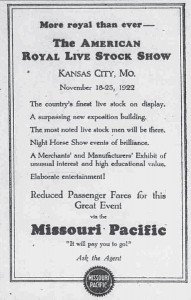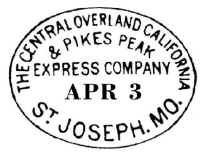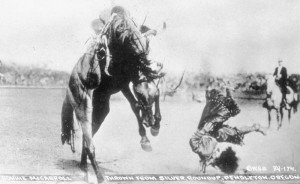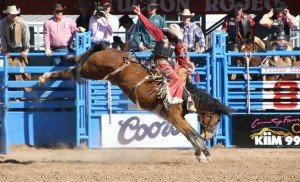The American Royal Livestock Show is all about the famous history of the Kansas City Stockyards. During it’s peak activity, the Kansas City Stockyards were second only to those in Chicago. Kansas City was known to be the gateway to the west. Centrally located and on the heavy traveled railroad lines, the stockyards in Kansas City was the hub of activity during the later 1800’s and was busy through he 1940’s.
Thank you for reading this post, don't forget to subscribe!
The last cattle went out the stockyard chutes in the 1990’s. Kansas City today, being a great metropolis with 2 million plus people with a diverse economy, has of course changed greatly and the history of it’s stockyards have largely faded into history.
The American Royal
The legacy of the stockyards is what the American Royal is all about. The American Royal is a non-profit organization that runs the country’s largest livestock show. The American Royal however is much more than simply a livestock show. The annual event which takes place from about September to Thanksgiving weekend also includes a rodeo and what many feel is the country’s largest barbecue competition. The annual event begins with a parade in downtown Kansas City.
There are about forty events in all showcased. The annual event that today is called the American Royal was started back in 1899 and first called the Hereford Show. In 1901 the Kansas City Drover’s Telegram paper suggested to call it The American Royal and the name stuck. While the American Royal started as a cattle show in 1899, horse shows were added in 1907. Today, it’s estimated that the American Royal adds about $70 million dollars per year to the Kansas City economy.

The Kansas City Stockyards
The Kansas City Stockyards were founded in 1871 on at the time thirteen acres in the West Bottoms area of the Kansas City. By 1878 the stockyards grew to fifty-five acres. Where the stockyards was founded was a rather historic area. The West Bottoms, just west of downtown Kansas City was the home of the Central Overland California and Pikes Peak Express Company. This was the company that supplied settlers heading west. It was also the same company that operated the famed Pony Express during 1861. The Pony Express, while being very successful on an operational level never made money. In fact, it lost a lot of money and the Central Overland Company went out of business in 1862. This was also the same time that the transcontinental telegraph was completed.
The Kansas City Stockyards remained busy for decades. From it’s very start in 1871, the stockyards stayed active through the 1940’s. The Great Flood of 1951 virtually destroyed the stockyard area and the business never really recovered after that. The last animal passed through it’s gates in 1991.

We have two additional Trips Into History photo articles you’ll find interesting. Cattle Drives and Cowboys and the Professional Rodeo Cowgirls.
Also, on our Western Trips site see the American Quarter Horse Museum in Amarillo Texas.
The American Royal and Agricultural Students
The American Royal is much more than a series of events. In 1926, the American Royal invited agriculture students to be a part of judging livestock. In 1928 a group of these students gathered and formed the Future Farmers of America. In 1988 the name was changed to the National FFA Organization. In addition to agriculture production, the organization includes science, business and technology. It’s an important distinction to note that the National Future Farmers of America is the largest career and technical student organization in US schools. The entire organization strives to build leadership qualities to nurture the students abilities and experience in a variety of agricultural fields. The organization also reaches Puerto Rico and the U.S. Virgin Islands.

American Royal Events
Among the events you can enjoy in addition to the livestock shows is the PRCA Gold Tour Rodeo. This rodeo tour draws the top PRCA cowboys and WPRA cowgirls. The event usually takes place in Kansas City’s Sprint Center. Other events such as the Cutting Horse and the UPHA National Championships are typically held in the Hale Arena and Kemper Arena. Cowgirls made a name for themselves as early as 1900 when they first competed in local competitions. These included names such as Bonnie McCarroll, Connie Douglas Reeves, May Lillie, Annie oakley and Lucille Mulhall.

The United Professional Horsemen’s Association is an association of Professional Horsemen and Horsewomen who have joined together to improve the horse show industry and define and clarify their professionalism within the industry. Saddlebreds, Hackney Ponies, and Road Horses from UPHA chapters throughout the United States come to Kansas City to compete for more than $200,000 in prize money and the honor of being national champions.There are fourteen different classes where champions are crowned during the event.
The American Royal BBQ is one of the nation’s biggest barbeque competitions. Contestants come to Kansas City from all over the world. The event is held in the parking lots both inside and around the Kemper Arena. To give you an idea of the popularity of this barbecue competition, it’s estimated that about 70,000 people attend each year. A popular part of the barbecue competition and one that has been going on for twenty-five years is the Barbecue Sauce Competition. Categories for judging are Tomato Hot, Tomato Mild, Vinegar, Mustard, and Specialty. The Barbecue Sauce Contest is open to anyone with a sauce that is available commercially. Contestants may enter as many sauces as they wish as long as all of them conform to the competitions rules. Rules can be found at the American Royal Barbecue Rules site.
Visit Kansas City
There are a great many fun things to do in Kansas City. Planning a visit to Kkansas City during the fall when The American Royal is going on just adds to the many things to enjoy in this very diverse city. Some additional sites to add to your Kansas City trip planner are the National World War I Museum, the very popular and historic Steamboat Arabia Museum, the Harley-Davidson Factory Tour, the Hallmark Visitors Center and Missouri Town 1855.
(Photos and images from the public domain)
